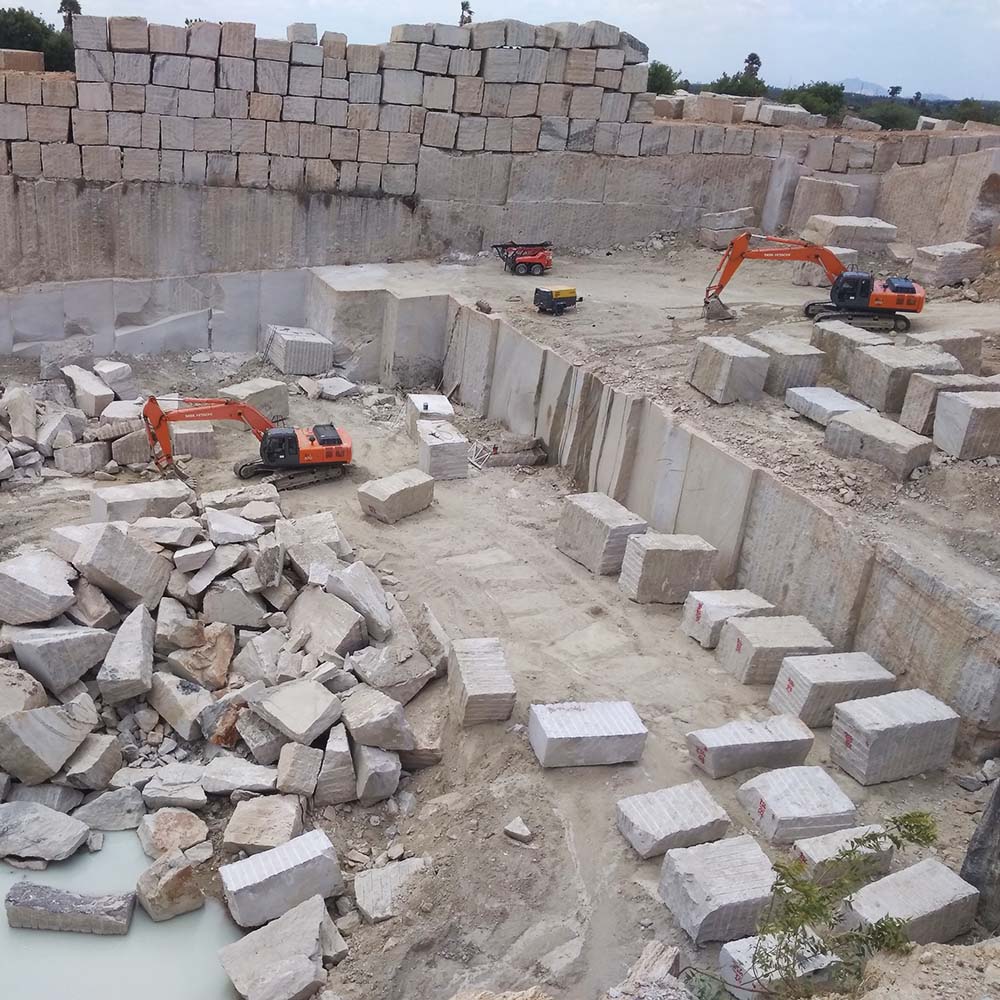Unleashing the Charm and Durability of Granite Quarry: A Journey With Time
Granite quarries stand as testimonies to both the geological wonders of our planet and the long-lasting workmanship of mankind. As we peel off back the layers of time and dig into the detailed globe of granite quarrying, we discover a story that not just showcases the appeal and sturdiness of this magnificent stone yet additionally drops light on the profound influence it has had on civilizations previous and present.

The Origins of Granite Quarrying
In the annals of background, the beginnings of granite quarrying can be traced back to ancient human beings where the quest for resilient structure products sustained the development of this ageless craft. From the majestic structures of ancient Egypt to the special holy places of Greece, granite has actually been prized for its strength, charm, and long life. The Egyptians, with their innovative quarrying techniques, were among the first to extract granite widespread, using it to build significant pyramids and detailed statuaries that have actually withstood the test of time.
As civilizations developed, so did the methods of quarrying granite. The Romans even more fine-tuned the methods, establishing tools and machinery to extract and transport granite over vast ranges for their building tasks. The longevity and visual allure of granite made it a treasured product for sanctuaries, monoliths, and sculptures throughout the ages.
Today, the tradition of old quarrying techniques survives, with contemporary technology enhancing efficiency while still paying homage to the workmanship of our forefathers. The origins of granite quarrying serve as a testament to human resourcefulness and the long-lasting appeal of this noble rock.
Tools and Techniques of Quarrying
Discovering the precise workmanship of granite quarrying reveals a sophisticated selection of tools and strategies thoroughly honed over centuries. Quarrying granite needs specialized tools to extract the rock from the earth successfully and with precision. Modern quarries make use of diamond-wire saws, high-powered drills, and explosives to damage apart the granite in a controlled way. These tools enable for the removal of big blocks of granite while decreasing waste and environmental influence.
Along with sophisticated equipment, conventional hand devices are still made use of in certain quarrying procedures to make certain delicate precision in removing the rock. Chisels, hammers, and wedges are employed by proficient quarry workers to separate granite obstructs along all-natural cracks, a technique that has been given via generations.
Furthermore, methods such as piercing upright and straight holes for placing feathers and wedges, in addition to the regulated use explosives in tactical places, make it possible for quarry workers to extract granite successfully while maintaining the integrity of the stone. The harmony between contemporary technology and standard workmanship is vital to the lasting quarrying of granite for generations ahead.
Advancement of Granite Quarries
The transformation of granite quarries in time exposes an interesting narrative of technological improvement and market development. From ancient times where hands-on tools like chisels and hammers were used to extract granite blocks, to the industrial change introducing steam-powered equipment for faster quarrying, the evolution of granite Learn More quarries has actually been marked by significant technologies. In recent decades, the development of diamond cord saws and progressed exploration modern technologies has actually reinvented the extraction process, permitting more precise cuts and lowered wastefulness of raw product.

Granite Quarrying in Modern Times
The progression of granite quarrying methods from historical reliance on manual tools to the cutting-edge methods of modern times underscores a remarkable journey of technological innovation and sustainability practices within the sector. In modern granite quarrying, progressed machinery such as diamond wire saws, high-capacity excavators, and computerized exploration tools have actually reinvented the extraction process. These tools boost performance, accuracy, and security, enabling for larger amounts of granite to be removed in a much shorter timeframe compared to traditional approaches.
Additionally, contemporary quarrying practices focus on sustainability and ecological stewardship - granite quarries in south africa. Business are increasingly taking on green techniques like water recycling systems, dirt suppression technologies, and recovery prepare for tired quarries. These campaigns aim to minimize the ecological impact of granite removal, save natural sources, and restore quarried landscapes to their initial state
Moreover, the integration of electronic innovations like drones, general practitioner tracking, and 3D modeling has actually allowed quarry drivers to enhance procedures, enhance decision-making, and ensure the lasting management of resources. By welcoming development and sustainability, the granite quarrying sector in contemporary times remains to flourish while promoting environmental obligation.

Preserving and Shielding Granite Quarries
Amidst the developing landscape of granite quarrying techniques, preservation and security of these beneficial natural sites have become critical issues for industry stakeholders and environmental advocates alike. As granite quarries visit this web-site continue to be a vital source of this coveted rock, it is essential to adopt lasting approaches that guarantee their durability and secure surrounding communities.
Preserving granite quarries involves implementing reliable recovery plans to restore the land post-extraction. granite quarries in south africa. This process consists of improving the terrain, replanting indigenous plant life, and producing habitats for wildlife to grow. By bring back quarries to their natural state, the ecological influence can be lessened, and the charm of these landscapes can sustain for future generations to value
Moreover, safeguarding granite quarries calls for implementing policies that govern liable quarrying methods. This includes tracking water quality, regulating dust emissions, and taking care of noise degrees to reduce disturbances to the atmosphere and nearby areas. Collective initiatives between sector players, governmental bodies, and preservation groups are critical in maintaining these standards and making certain the sustainable usage of granite quarries.
Conclusion
Finally, the journey via time in granite quarrying reveals the beginnings, tools, strategies, and evolution of this method. The modern age has actually brought improvements in quarrying techniques, making it possible for the preservation and defense of these beneficial natural deposits. It is essential to remain to promote sustainable methods to make certain the beauty and toughness of granite quarries for future generations to appreciate.